Yali Zheng
Tiny-PPG: A Lightweight Deep Neural Network for Real-Time Detection of Motion Artifacts in Photoplethysmogram Signals on Edge Devices
May 05, 2023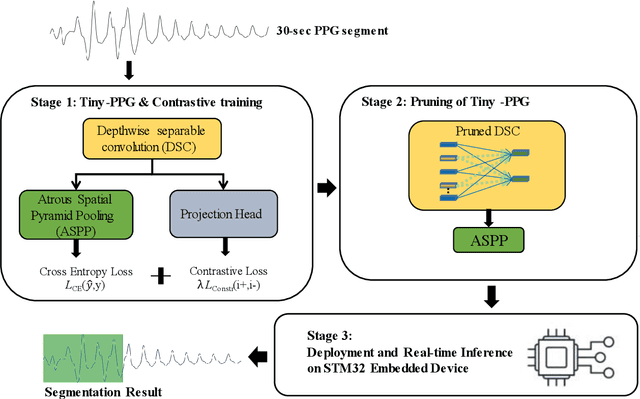
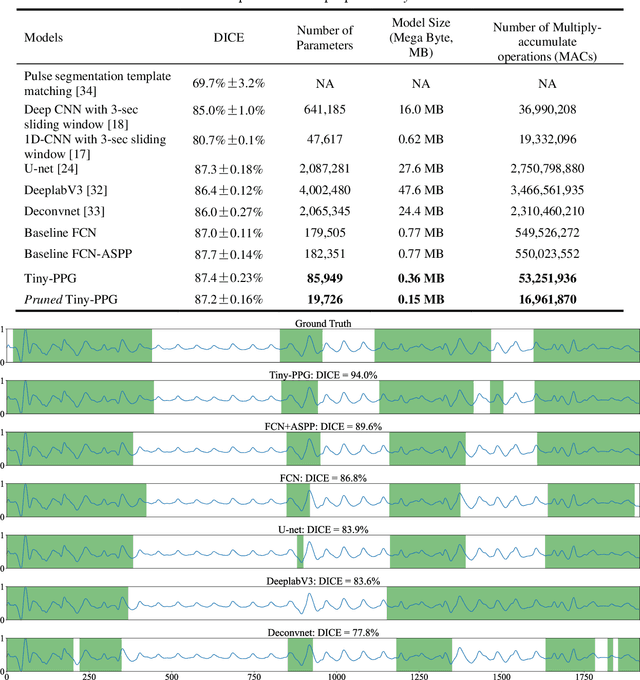
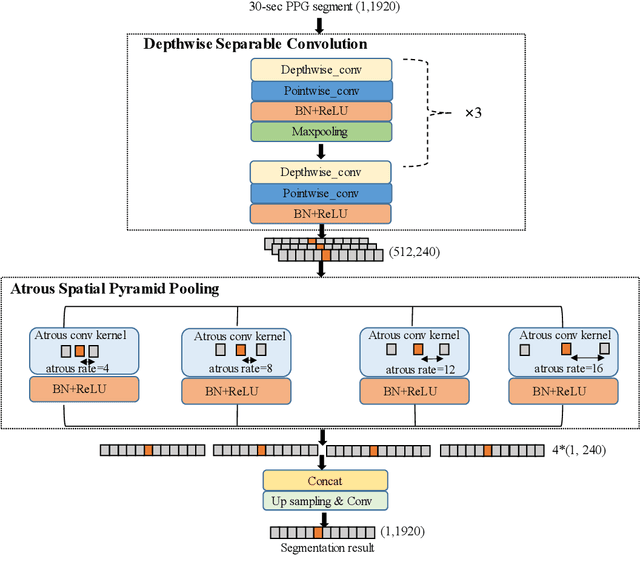
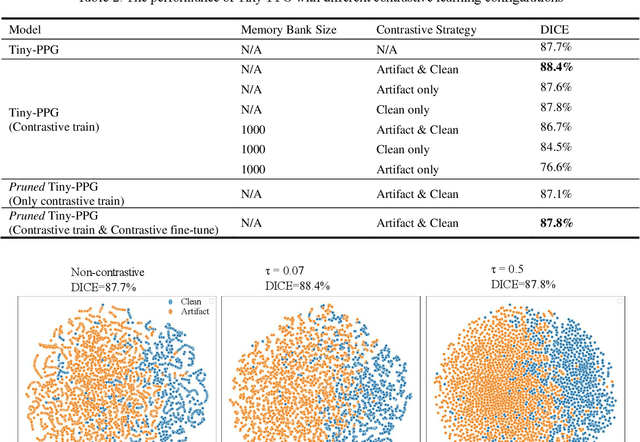
Abstract:Photoplethysmogram (PPG) signals are easily contaminated by motion artifacts in real-world settings, despite their widespread use in Internet-of-Things (IoT) based wearable and smart health devices for cardiovascular health monitoring. This study proposed a lightweight deep neural network, called Tiny-PPG, for accurate and real-time PPG artifact segmentation on IoT edge devices. The model was trained and tested on a public dataset, PPG DaLiA, which featured complex artifacts with diverse lengths and morphologies during various daily activities of 15 subjects using a watch-type device (Empatica E4). The model structure, training method and loss function were specifically designed to balance detection accuracy and speed for real-time PPG artifact detection in resource-constrained embedded devices. To optimize the model size and capability in multi-scale feature representation, the model employed deep separable convolution and atrous spatial pyramid pooling modules, respectively. Additionally, the contrastive loss was also utilized to further optimize the feature embeddings. With additional model pruning, Tiny-PPG achieved state-of-the-art detection accuracy of 87.8% while only having 19,726 model parameters (0.15 megabytes), and was successfully deployed on an STM32 embedded system for real-time PPG artifact detection. Therefore, this study provides an effective solution for resource-constraint IoT smart health devices in PPG artifact detection.
Self-Paced Deep Regression Forests with Consideration on Ranking Fairness
Dec 28, 2021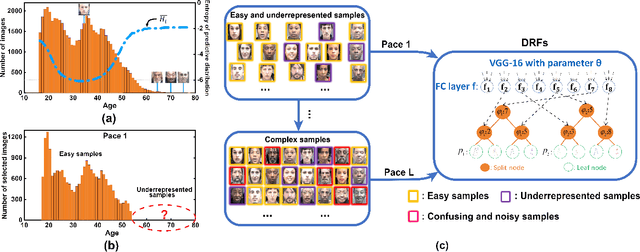
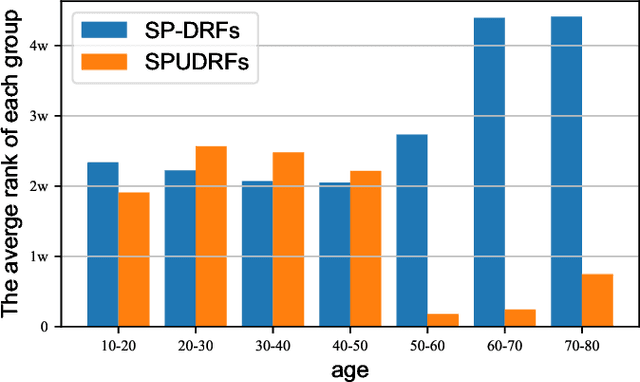
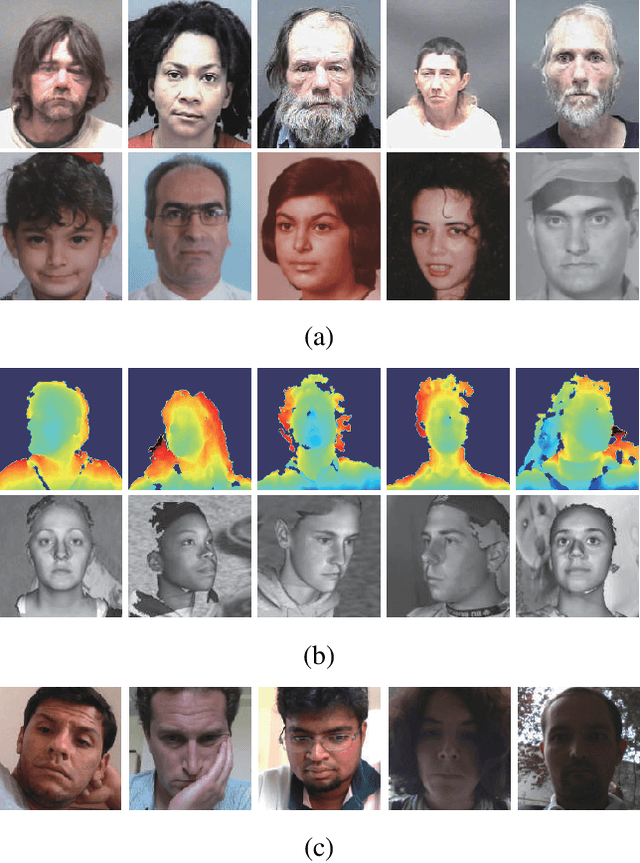
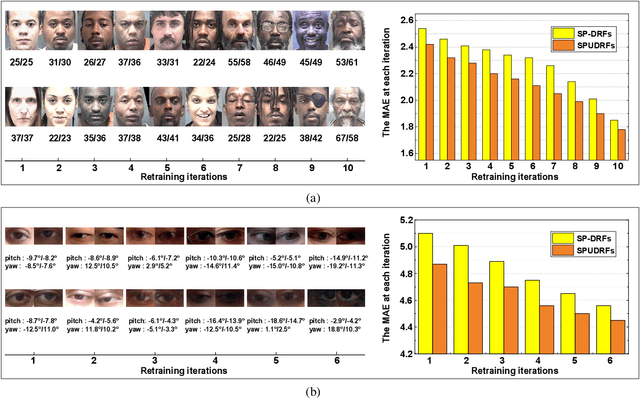
Abstract:Deep discriminative models (DDMs), such as deep regression forests, deep neural decision forests, have been extensively studied recently to solve problems like facial age estimation, head pose estimation, gaze estimation and so forth. Such problems are challenging in part because a large amount of effective training data without noise and bias is often not available. While some progress has been achieved through learning more discriminative features, or reweighting samples, we argue what is more desirable is to learn gradually to discriminate like human beings. Then, we resort to self-paced learning (SPL). But a natural question arises: can self-paced regime lead DDMs to achieve more robust and less biased solutions? A serious problem with SPL, which is firstly discussed by this work, is it tends to aggravate the bias of solutions, especially for obvious imbalanced data. To this end, this paper proposes a new self-paced paradigm for deep discriminative model, which distinguishes noisy and underrepresented examples according to the output likelihood and entropy associated with each example, and tackle the fundamental ranking problem in SPL from a new perspective: fairness. This paradigm is fundamental, and could be easily combined with a variety of DDMs. Extensive experiments on three computer vision tasks, such as facial age estimation, head pose estimation and gaze estimation, demonstrate the efficacy of our paradigm. To the best of our knowledge, our work is the first paper in the literature of SPL that considers ranking fairness for self-paced regime construction.
 Add to Chrome
Add to Chrome Add to Firefox
Add to Firefox Add to Edge
Add to Edge